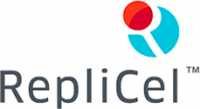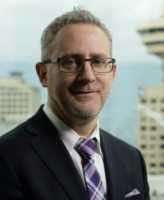22 Apr RepliCel Developing Autologous Cell Therapies For Skin, Hair and Tendon Regeneration
MedicalResearch.com with:
Lee Buckler, CEO
RepliCel Life Sciences
MedicalResearch.com: What is the background for this your company, RepliCel.com?
Response: RepliCel Life Sciences is a Canadian regenerative medicine company based in Vancouver, British Columbia that was founded in 2006. The company focuses on the development of cell therapies using a patient’s own cells (autologous cell therapy). It is developing treatments targeted at healing chronic tendon injuries that have failed to heal properly, hair restoration, and the treatment of damaged and aged skin.
MedicalResearch.com: What are its goals and mission?
Response: RepliCel is developing medical innovations which are life-changing and first-of-its-kind cell therapies treating conditions affecting 1 in 3 Americans: pattern baldness, aging and sun-damaged skin, and chronic tendon degeneration.
The company’s goal is to continue to build shareholder value and develop aesthetic and orthopedic-focused products involving a local injection of a patient’s own stem cells into areas where the need is related to the resident cells no longer capable of meeting demand.
The company is also innovating around a unique dermal injection cell delivery system.
We have shown that our treatment for hair replacement can be delivered safely and the company has already attracted one licensee for its technology, with Japan’s Shiseido running a clinical trial in Japan due to report next year.
The company currently has the following four promising products in its pipeline:
- RCT-01 for the treatment of chronic tendinosis caused by acute and chronic tensile overuse has recently been successfully tested in a Phase1/2 single-center trial investigating the use of the company’s type 1 collagen-expressing, follicle-derived fibroblast cell therapy as a treatment for chronically injured tendons.
- RCS-01 for the treatment of patients suffering from aged and UV-damaged skin has recently been successfully tested in a Phase 1 single-center trial for the company’s type 1 collagen-expressing, follicle-derived fibroblast cell therapy for potential skin rejuvenation.
- RCH-01 for the treatment of patients with androgenetic alopecia [male/female pattern hair loss] has been successfully tested in a Phase 1 single-center trial investigating the use of the company’s dermal sheath cup cell therapy for hair regeneration. This product is now under clinical testing at Tokyo Medical University Hospital and Toho University Ohasi Medical Center. The study is funded by Shiseido Company, who RepliCel has a licensing and financing arrangement with in Asia.
- RCI-02 is a dermal injector device, and the first of several devices to which the company believes its dermal injection-related intellectual property will lead. RCI-02 is designed for the injection of hyaluronic acid-based dermal fillers, although the device will be capable of being used for other products with similar injection profiles.
MedicalResearch.com: How do the dermal sheath cells know to become hair follicles and not other tissues or organs?
Response: Non-bulbar dermal sheath cells are fibroblasts. They build tissue by the cells responding to what the body is telling them to do in the particular ‘niche’ that they’re in.
What we’re doing is leveraging these cells to express proteins that build tissue, especially type 1 collagen. How and where you inject these cells and what happens to these cells after they are injected is directed by the body and the body dictates what these cells do, like grow hair follicles or generate tendon tissue. We’re putting fresh, highly expressive fibroblasts in an area of the body where the need is great.
MedicalResearch.com: Is there a risk of malignant transformation?
Response: We are always watching for any malignant transformation and we have not seen any evidence of adverse growth in animal testing or over five years of human clinical follow-up.
MedicalResearch.com: What type of animal studies have been performed?
Response: We performed numerous studies in various mouse models.
MedicalResearch.com: Can the process stimulate hair growth on other areas of the body, away from where it is injected?
Response: Our studies demonstrate that the cells stay very local to the site of injection.
MedicalResearch.com: What should readers take away from your report?
Response: In first-in-human clinical studies, the cell therapies in development by RepliCel have demonstrated an extremely high safety profile and strong signals of therapeutic potential for the treatment of Androgenetic Alopecia, tendon degeneration, and aging or sun-damaged skin.
This is a company working with partners around the world to develop next-generation treatments in large-market aesthetics and orthopedic applications which affect more than one in three Americans.
MedicalResearch.com: What recommendations do you have for future research as a result of this study?
Response: For our product related to pattern baldness, we are pleased Shiseido continues to fund the two-site clinical research study for pattern baldness (RCH-01). Concurrently, we’re doing some exciting research and development on the product (e.g., genetic expression studies) which we are confident will lead to a significantly superior product that we looking forward to moving into next-phase clinical testing. For our products related to skin rejuvenation and tendon regeneration, we are now designing next-phase clinical studies and in discussion with potential partners about potential collaborations. These studies will focus on optimizing dose and treatment frequency. In parallel we’re working on product development initiatives focused on maximizing commercial viability of our products.
MedicalResearch.com: Is there anything else you’d like to add?
Response: The big picture for us is that we are developing next-generation products for some very large-market opportunities that fit well with the increasingly aging global demographic. We have very strong signals of efficacy in early-stage first-in-human trials which we expect to leverage in collaboration with our partners and leading researchers around the world to continue to de-risk and prove out the therapeutic value of our products. This is an early-stage biotechnology company with near-term revenue generating potential through the expected commercialization of its dermal injector in 2018.
Lee Buckler is the President and CEO of RepliCel Life Sciences. He possesses nearly 20 years of cell therapy experience and has pioneered many innovative business and cell science approaches in the field of regenerative medicine.
As CEO of RepliCel, Buckler oversees the development of the world’s first-of-its-kind cell therapies treating conditions affecting 1 in 3 Americans: pattern baldness, aging and sun-damaged skin, and chronic tendon degeneration. RepliCel aesthetic and orthopedic-focused products are cell therapies involving a local injection of a patient’s own stem cells into areas where the need is related to the resident cells no longer capable of meeting demand. RepliCel is also innovating around unique dermal injection technologies, proprietary cell isolation and manufacturing technologies, and unique cell delivery systems.
RepliCel Life Sciences
Last Updated on April 23, 2017 by Marie Benz MD FAAD


